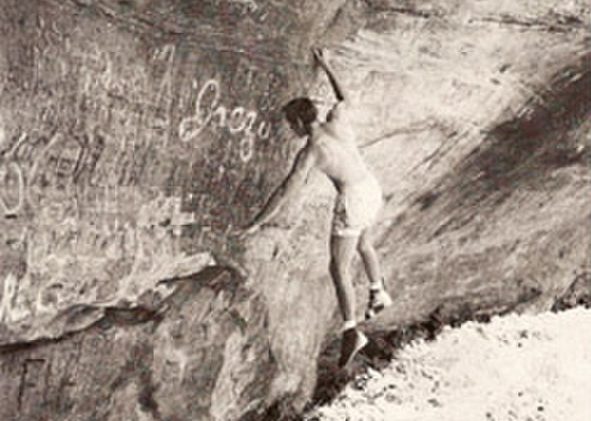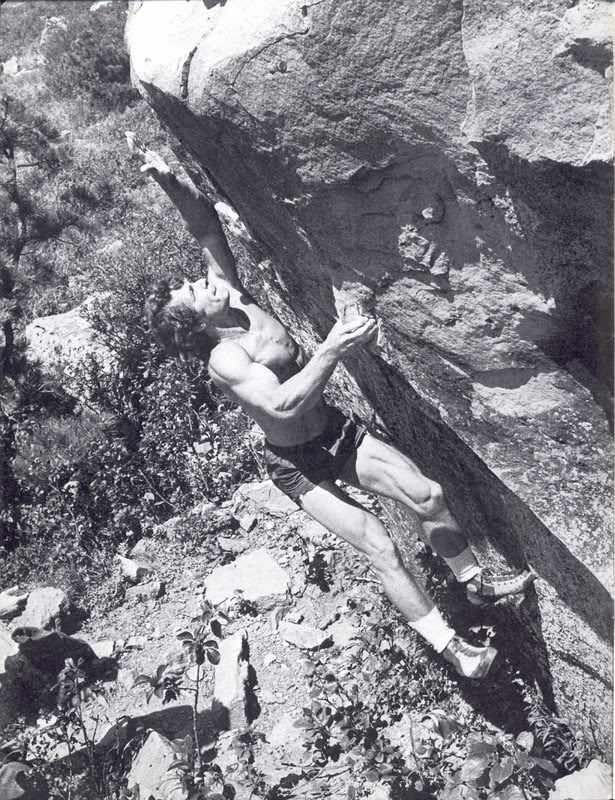Dynos Were Once Bad Style and the World Record
"The climber, to stay balanced and in control, maintained three points of contact at all times.”

Dynos weren’t always seen as good style in climbing, of course that was before bouldering and indoor climbing caught on.
The U.S. Army had a climbing rule called three-point suspension to train troops during WWII, which read as, “The climber, to stay balanced and in control, maintained three points of contact at all times.”
Even the classic book, Mountaineering: The Freedom of the Hills says that dynos are an “elementary approach to rock climbing.”
Gill, in his 1969 American Alpine Journal essay The Art of Bouldering, defined a lunge, which is today’s dyno, as “Considered by many traditional mountaineers to be an execrable mutation of good technique, may be safely employed by the boulderer.”
He also defined the “dynamic layback,” which is today’s deadpoint, as occuring when a climber places their hands “on a hold at the high deadpoint of the swing… The ability to return to the start at a speed somewhat less than that of a free fall.”
Gill didn’t coin the shorthand for dynamic as dyno, instead it came about in the next decade at the Mount Baldy boulders near Upland, California.

The Cuco Boulder had a number of dynamic problems. One of the area’s top climbers was John Long, who said, “The hardest problems were these big dynamics and we developed all these goofy words: ‘dyno,’ ‘mo.’ In the whole Stonemaster thing, it was like we were speaking our own language.”
Over the next few decades, more climbers began using dynos both indoor and out and they are now part of most indoor climbing competitions.

In April 2002, the first official Guinness World Records dyno competition took place in at the Edge Climbing Centre in Sheffield, England.
The winners were Matt Heason with a 2.575-metre dyno and Katherine Schirmacher with a 1.9-metre dyno. The distances on the 110-degree wall were measured from the left of two fixed launch holds to the target jug, which needed to be held “in control” (about two seconds) with both hands.
Competitors could choose from two columns of footholds, but could not stand on the launch holds. As the comp progressed, the target grip was moved diagonally up and left at a 45-degree-angle.
That configuration has since been set as the official template by the Guinness Book of World Records. The current World Record holder is American Skyler Weekes who set it in 2010 at 282 cm.
The current Female World Record holder is Celine Cuypers from Belgium. She broke the 2012 record set by Canadian Elise Sethna at 200 cm by 17.5 cm, which means the new record is 237.5 cm.
Many hard rock climbs have dynos, including the famous Dawn Wall 5.14d on El Cap, Rainbow Rocket V11 in Fontainebleau, Hole in One V10 in Rocklands and Chris Sharma’s Mallorca Arch dyno.


